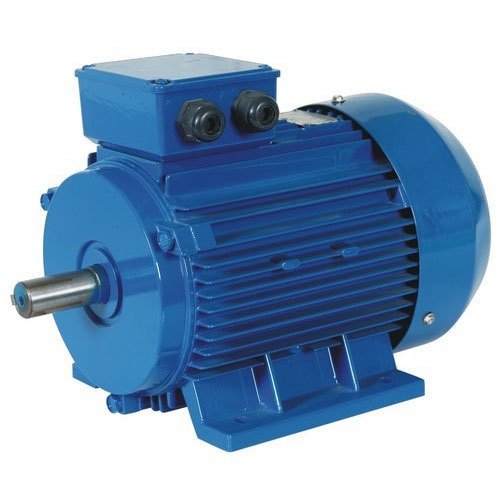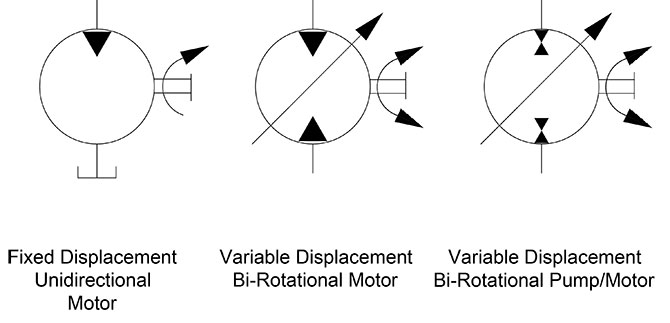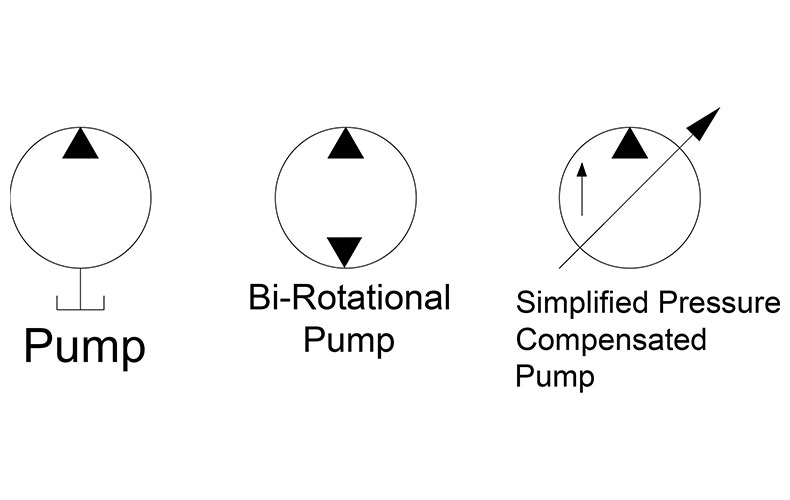Hydraulic pumps are devices that use pressurized fluid to move something. The most common type of hydraulic pump is the diesel engine pump, which is used to power vehicles and machinery. When you see the symbol for a hydraulic pump, it usually looks like a gear or an H with a circle around it.
Many people also refer to hydraulic pumps as “pumps” or “engine pumps.”
What Is a Hydraulic Pump?
A hydraulic pump is a machine that uses the power of hydraulics to move fluid. The most common type of hydraulic pump is the piston pump, which uses pistons to move the fluid.
A hydraulic pump can be used to move a variety of fluids, including water, oil, and gas. It is often used to move liquids and gas through pipelines, in tanks, and on land.
A hydraulic pump works by using the power of hydraulics to move the fluid. The fluid is pumped from one location to another using a series of pistons.
The pump is powered by a motor, and the pistons are connected to the motor by gears. The gears allow the pistons to move the fluid at a controlled speed.
The hydraulic pump can be used to move a variety of fluids, including water, oil, and gas. It is often used to move liquids and gas through pipelines, in tanks, and on land.

How Does a Hydraulic Pump Work?
A hydraulic pump is a machine that uses the power of water to move things. It’s used in a lot of different ways, but most commonly it’s used to move things like oil and gas.
A hydraulic pump works by using the power of water to move things. There are two main types of hydraulic pumps: positive displacement and impulse. Positive displacement pumps use a moving fluid to push a stationary piston back and forth. Impulse pumps use a moving fluid to create an impulse that pushes the piston forward.
The main difference between the two types of pumps is how they create the impulse. Positive displacement pumps use a moving fluid to push a stationary piston back and forth. Impulse pumps use a moving fluid to create an impulse that pushes the piston forward.
The main advantage of impulse pumps is that they’re more efficient than positive displacement pumps. They can also be more accurate, since they don’t require a stationary piston.
What are the Hydraulic Pumps used for?
Hydraulic pumps are used for a variety of purposes, most notably in agriculture and industry. They are also used in a variety of other applications, such as powering water filtration systems and as part of fishing equipment.
Hydraulic pumps are typically used to move fluid fluids, such as water, oil, or gas. They can also be used to create pressure or to generate power.
What is the Hydraulic Pump Symbol?
A hydraulic pump is a machine that uses pressure to move fluid or gas. The hydraulic pump symbol is a right-angled triangle with the height of the triangle equal to the width of the base. The point of the triangle points down and to the right, representing movement of fluid or gas.
The Hydraulic Pump Symbol is used on equipment to indicate that it uses hydraulic pressure to move fluid or gas.
What Does the Symbol Mean?
The symbol for a hydraulic pump is an upside down triangle with the top point down. The triangle is meant to represent the flow of liquid or gas through the pump.
The pump icon is typically used on computer screens, websites and other displays to indicate a hydraulic press or other hydraulic machinery.
The pump symbol is also used to identify products or services that can be used with hydraulic machinery, such as hydraulic hoses and fittings.
What Does the Pump Icon Mean on a Website?
When you see the pump icon on a website, it usually means that the website provides information or services related to hydraulic pumps. For example, you might see the pump icon when you visit a website that sells hydraulic equipment, such as a hydraulic press.

History of the Hydraulic Pump Symbol
The Hydraulic Pump symbol has a long and interesting history. The symbol first appeared on hydraulic pumps in the early 1800s. At the time, engineers were trying to create a unique symbol to identify their devices. They eventually settled on using a stylized version of the Greek letter “P” (which is pronounced “pee”). The letter “P” is typically used to represent pumping action, so the engineers decided to use it as the symbol for hydraulic pumps.
The Hydraulic Pump symbol has since become an internationally recognized symbol for pumps. Many companies have adopted the symbol as their own, and it is now used in many different industries.
Use of the Hydraulic Pump Symbol
The hydraulic pump symbol is used to identify a hydraulic pump in printed materials and on webpages. The symbol consists of a blue circle with a white cross in the center.
The blue circle represents water, while the white cross represents the pistons and valves of the pump.
The hydraulic pump symbol is usually used to identify a hydraulic pump that can be used to move liquid or gas.
The hydraulic pump symbol is also used to identify a hydraulic pump that can be used to power devices, such as machines or vehicles.
The hydraulic pump symbol is registered with the United States Patent and Trademark Office (USPTO).
The hydraulic pump symbol is a registered trademark of the Parker Hannifin Corporation.
The hydraulic pump symbol is also a trademark of the IHI Corporation.
The hydraulic pump symbol is a trademark of the Yokogawa Corporation.
The hydraulic pump symbol is a trademark of the Deere & Company.
The hydraulic pump symbol is a trademark of the Meralco Corporation.
Conclusion
The symbol for a hydraulic pump is a pair of leaning legs with the feet pointing in the direction of flow. The hydraulic pump was first invented by an Italian engineer, Angelo Mariani, in 1790.
The blue circle represents water, while the white cross represents the pistons and valves of the pump. The symbol has a long and interesting history, and is now used in many different industries.
The hydraulic pump symbol is registered with the United States Patent and Trademark Office (USPTO).
What is the symbol for a hydraulic pump,please click topkitparts see more

